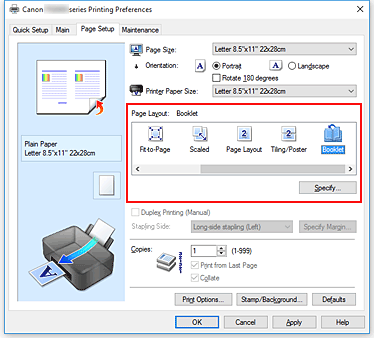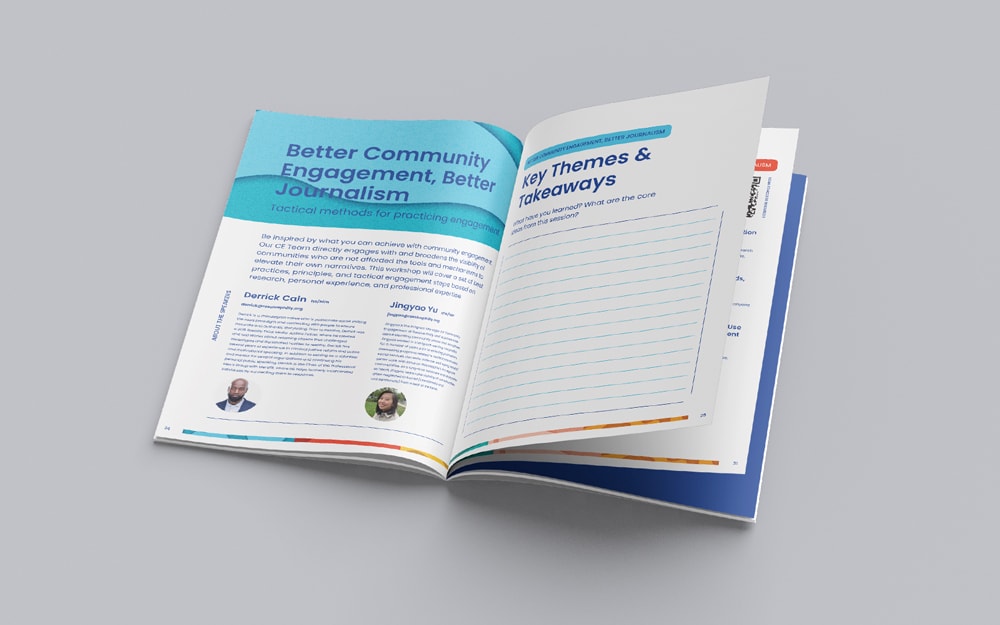Booklet Printing FAQs: Everything You Need to Know Before You Order
Booklet Printing FAQs: Everything You Need to Know Before You Order
Blog Article
The Essential Guide to Understanding Pamphlet Printing Options and Techniques
The procedure of booklet printing entails multiple considerations that can considerably impact the end product. From selecting the appropriate style and size to comprehending the subtleties of binding methods, each selection plays an important duty. Additionally, variables such as paper supply and printing techniques additional influence the performance of the pamphlet. As one browses these choices, it becomes crucial to understand just how they interconnect and what that implies for the general end result.
Comprehending Pamphlet Sizes and formats
When considering booklet printing, recognizing the various styles and dimensions available is important for accomplishing the desired discussion. Brochures can be created in various styles, consisting of saddle-stitched, spiral-bound, and perfect-bound, each offering distinct advantages. Usual dimensions range from common letter (8.5 x 11 inches) to smaller alternatives like A5 (5.8 x 8.3 inches), enabling adaptability based upon web content and target audience.Selecting the suitable size can influence both the layout and reader engagement. Bigger dimensions could match visually driven web content, while smaller formats might be more mobile and easy to use. Furthermore, the number of pages impacts the option of binding technique, as thicker pamphlets might require tougher bindings. Inevitably, comprehending these aspects enables an extra tailored approach, making certain that the end product aligns with the desired message and aesthetic, improving the overall performance of the communication.
Picking the Right Paper Stock

Binding Approaches: Alternatives and Factors To Consider
When it pertains to binding techniques for booklets, several choices are offered, each with unique advantages. Saddle stitch binding provides a cost-effective solution for thinner brochures, while ideal binding techniques supply a more refined search for thicker magazines. Wire-O binding attracts attention for its durability and ease of usage, making it excellent for papers that require versatility.
Saddle Stitch Binding
Saddle stitch binding supplies a cost-effective and functional remedy for assembling pamphlets, making it a preferred selection amongst services and publishers. This binding approach includes folding sheets of paper in half and stapling them along the fold line, developing a neat and well organized appearance. Normally ideal for pamphlets with a reduced page count, saddle stitching is suitable for publications, brochures, and training materials. The simpleness of this strategy enables quick manufacturing and is often preferred for brief runs or promotional items. It is vital to note that saddle stitch binding may not be suitable for thicker brochures, as the spinal column might not hold up under boosted weight. Generally, it stays a reliable option for several printing tasks.
Perfect Binding Techniques
Perfect binding is a widely used method that gives a sleek and professional finish to publications and brochures. This approach entails gluing the pages with each other at the spine utilizing a solid adhesive, permitting a tidy side and the ability to hold a bigger number of web pages contrasted to saddle sewing. Perfect binding is especially ideal for thicker booklets, such as magazines and yearly reports, where a durable, level spine is desired. Furthermore, it supplies the alternative for a published cover that can be developed to enhance aesthetic allure. Nevertheless, factors to consider such as web page count, paper weight, and the intended usage of the pamphlet need to be thought about, as they can influence durability and total top quality.
Wire-O Binding Options
Wire-O binding, known for its resilience and flexibility, supplies an exceptional option for booklets that require very easy web page transforming and a specialist look. This binding technique utilizes a series of metal loops that hold web pages safely, allowing them to exist flat when open. It is particularly ideal for handbooks, presentations, and directories due to its durable nature. Wire-O binding is readily available in various colors and sizes, accommodating various page matters and thicknesses. Furthermore, it allows the inclusion of covers and tabs, enhancing the booklet's total aesthetic. Considerations for Wire-O binding include the option of cord shade, the size of the loopholes, and the extent of customization wanted, all of which can greatly affect the end product's look and functionality.
Digital vs. Offset Printing: Which Is Best for You?
When choosing a printing method for pamphlets, recognizing the distinctions between electronic and counter printing is important. Digital printing makes use of contemporary innovation to produce high-grade prints quickly and economically, making it optimal for short runs or projects calling for quick turnaround times. It enables customization, giving the ability to publish on-demand with marginal waste.In comparison, offset printing is a standard technique that excels in creating big quantities with consistent high quality. It includes transferring ink from a plate to a rubber blanket, then to the paper, which causes dynamic shades and accurate information. Nonetheless, counter printing typically needs longer configuration times and is more affordable for larger volumes.Ultimately, the selection in between digital and balance out printing depends upon project requirements, budget, and preferred quantity. For tiny, time-sensitive jobs, electronic could be the best option, while offset might be more suitable for bigger, top notch manufacturings.

Designing Your Brochure: Tips and Best Practices
When developing a pamphlet, cautious attention to design, font choice, and color usage can substantially boost its efficiency. A well-structured layout overviews the visitor's eye, while ideal typefaces guarantee readability and communicate the preferred tone. Furthermore, effective use of color can evoke feelings and highlight essential details, making the overall style more impactful.
Selecting the Right Format
How can one successfully pick the best design for a booklet? It is crucial to assess the brochure's purpose and target audience. A clean, arranged design improves readability and engagement. Using a grid system can aid in aligning aspects constantly, producing an expert appearance. Additionally, incorporating aesthetic hierarchy via varying sizes and pop over to this web-site positionings of images and message can assist the viewers's eye and highlight essential information. It is additionally crucial to leave enough white space, which avoids overcrowding and permits far better focus. Lastly, evaluating different layouts via mock-ups can supply understanding into exactly how the layout carries out in real-world circumstances, guaranteeing that the end product meets both aesthetic and useful requirements.
Choosing Proper Fonts
An appropriate font can significantly improve the total design of a booklet, matching the layout and strengthening the web content's message. The option of typefaces must take into consideration readability, especially for body text, as it assures the info is obtainable to all viewers. Sans-serif fonts are typically favored for electronic styles, while serif font styles can lend a traditional feel in published materials. It's suggested to limit font selections to 2 or 3 to keep visual coherence. Furthermore, typeface size plays an important function; headings need to be not frustrating however distinctive, while body text should fit for reading. When selecting fonts, alignment with the booklet's style and target audience is essential for effective interaction and aesthetic allure.
Reliable Use Color
Color serves as an effective device in brochure style, shaping assumptions and leading visitor feelings. It can stimulate sensations of enjoyment, peace, or trust, depending upon the hues selected. Designers should consider shade theory concepts, ensuring that the picked scheme lines up with the brochure's message and target audience. Using cozy colors like red and orange can create urgency, while cooler tones like blue and green foster tranquility.Additionally, comparison plays an essential duty; complementary shades can improve readability and visual allure. Uniformity in shade usage throughout pages further reinforces brand identification and cohesion. Eventually, reliable shade application not just captures interest yet additionally reinforces the brochure's function, making it an important facet of successful layout.
Finishing Touches: Coatings and Special Results
While lots of think about the content and design of a brochure the most essential aspects, the finishing touches, such as finishes and special results, play a crucial function in boosting its total charm. Coatings can give security and toughness, guaranteeing that the pamphlet holds up against deterioration. Matte coatings supply an innovative, non-reflective surface area, while glossy finishings can make colors appear even more lively and eye-catching. Unique results, like embossing or foil stamping, add a responsive dimension that can develop a remarkable perception. These techniques can highlight specific locations, drawing interest to crucial info or developing aesthetic rate of interest. Furthermore, UV covering can give a high-shine surface that elevates the overall look.Together, these ending up touches not only improve the booklet's aesthetic however also connect expertise and attention to detail, inevitably leaving a lasting effect on the visitor.
Price Factors To Consider for Booklet Printing
Recognizing the various price considerations for booklet printing is crucial for companies and services intending to maximize their budget plans. Secret aspects influencing expenses include the selection of binding, paper, and ink methods. Better materials, such as superior paper or specialized inks, commonly boost the overall expense. Furthermore, the dimension and page matter of the brochure play a significant function; larger booklets need even more sources and time to produce.Another crucial consideration is the printing technique, whether digital or offset, as each has its very own pricing framework and suitability for different amounts. Organizations ought to additionally factor in layout expenses, which can vary based upon intricacy and making use of specialist solutions. Inevitably, delivery and handling costs can add to the total amount, especially for big orders. By evaluating these components, organizations can make enlightened decisions that straighten with their financial capabilities while achieving the desired top quality in their published materials.
Often Asked Concerns
What Are the Environmental Influences of Booklet Printing?
The ecological effects of pamphlet printing consist of deforestation from paper manufacturing, carbon exhausts from transport, and waste generation from discarded materials - Booklet Printing. Sustainable techniques, such as utilizing recycled paper and green inks, can alleviate these effects
How Can I Ensure Shade Precision in My Brochure?
To assure shade precision in a brochure, one ought to use adjusted monitors, utilize expert shade accounts, conduct test prints, and select top quality printing services that provide color matching and proofing choices for best results.
What Is the Normal Turnaround Time for Brochure Printing?
The typical turn-around time for pamphlet printing differs relying on the complexity and quantity - Booklet Printing. Generally, it ranges from a couple of days to two weeks, affected by factors such as printing approaches and ending up requirements
Are There Minimum Order Quantities for Brochure Printing?

Can I Publish Booklets in Several Languages?
Publishing booklets in numerous languages is possible. Lots of printing solutions offer choices for bilingual or multilingual designs, permitting reliable try this web-site interaction. Mindful planning guarantees that make elements suit numerous languages without compromising readability or aesthetics. In addition, factors such as paper supply and printing strategies more affect the performance of the booklet. When thinking about brochure printing, comprehending the numerous layouts and dimensions readily available Learn More Here is essential for achieving the wanted discussion. When selecting a printing technique for brochures, comprehending the distinctions in between electronic and offset printing is essential. In addition, the size and web page matter of the booklet play a significant role; bigger booklets call for even more sources and time to produce.Another crucial consideration is the printing method, whether electronic or countered, as each has its own rates structure and suitability for various quantities. The ecological influences of pamphlet printing include deforestation from paper production, carbon discharges from transportation, and waste generation from discarded products.
Report this page